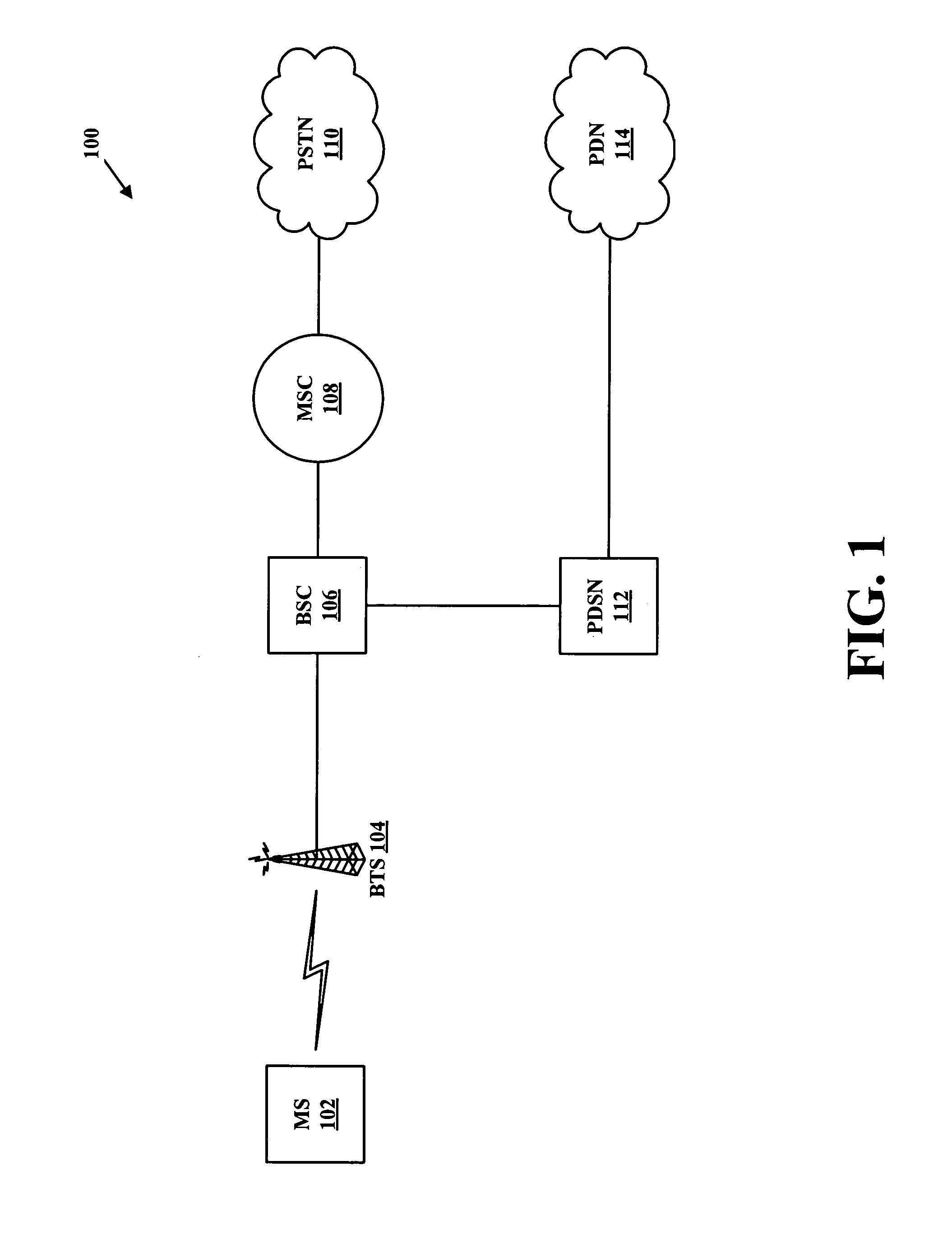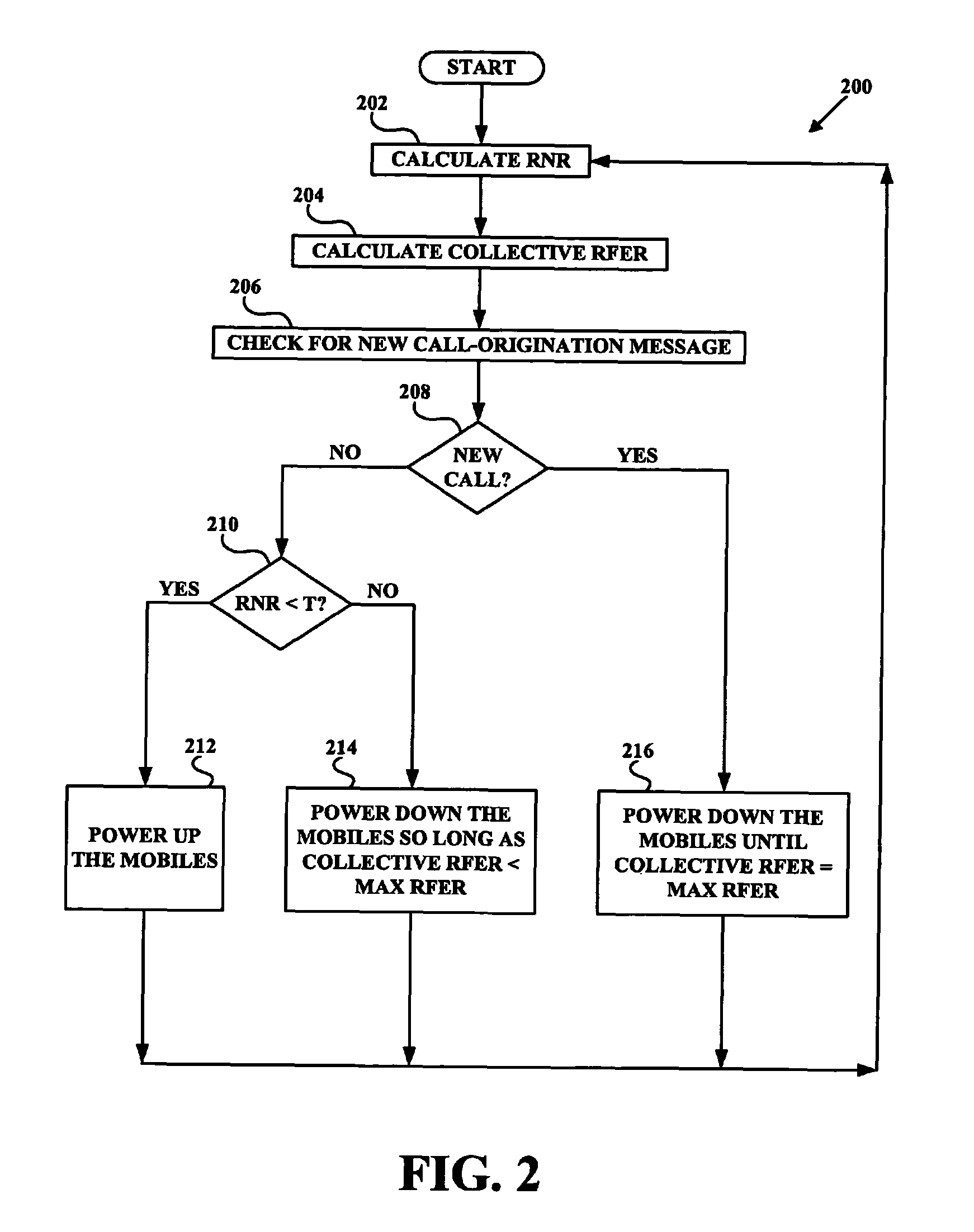Conducting power control based on reverse-link RF conditions
a reverse-link rf and power control technology, applied in power management, transmission monitoring, wireless commuication services, etc., can solve problems such as excessive noise from a single mobile station, and affecting the service life of the base station
- Summary
- Abstract
- Description
- Claims
- Application Information
AI Technical Summary
Benefits of technology
Problems solved by technology
Method used
Image
Examples
Embodiment Construction
1. Overview
[0036]As presently contemplated, in exemplary embodiments, a base station, with respect to a given sector / carrier, dynamically adjusts the reverse-link transmission power of the mobile stations on the sector / carrier in response to periodic calculations of RNR on the sector / carrier, periodic calculations of a collective RFER of the mobile stations on the sector / carrier, and periodic checking for call-origination messages. The collective RFER is essentially an average of the individual RFERs of the mobile stations on the sector / carrier. Another way to view the collective RFER is as a sector / carrier-wide calculation of error-containing or missing frames as compared with all frames that should have been received over some time period.
[0037]Thus, if the base station determines that a new call-origination message has not been received, the base station compares the calculated RNR with an RNR threshold. If the calculated RNR is less than the RNR threshold, the base station sends...
PUM
 Login to View More
Login to View More Abstract
Description
Claims
Application Information
 Login to View More
Login to View More - R&D
- Intellectual Property
- Life Sciences
- Materials
- Tech Scout
- Unparalleled Data Quality
- Higher Quality Content
- 60% Fewer Hallucinations
Browse by: Latest US Patents, China's latest patents, Technical Efficacy Thesaurus, Application Domain, Technology Topic, Popular Technical Reports.
© 2025 PatSnap. All rights reserved.Legal|Privacy policy|Modern Slavery Act Transparency Statement|Sitemap|About US| Contact US: help@patsnap.com



